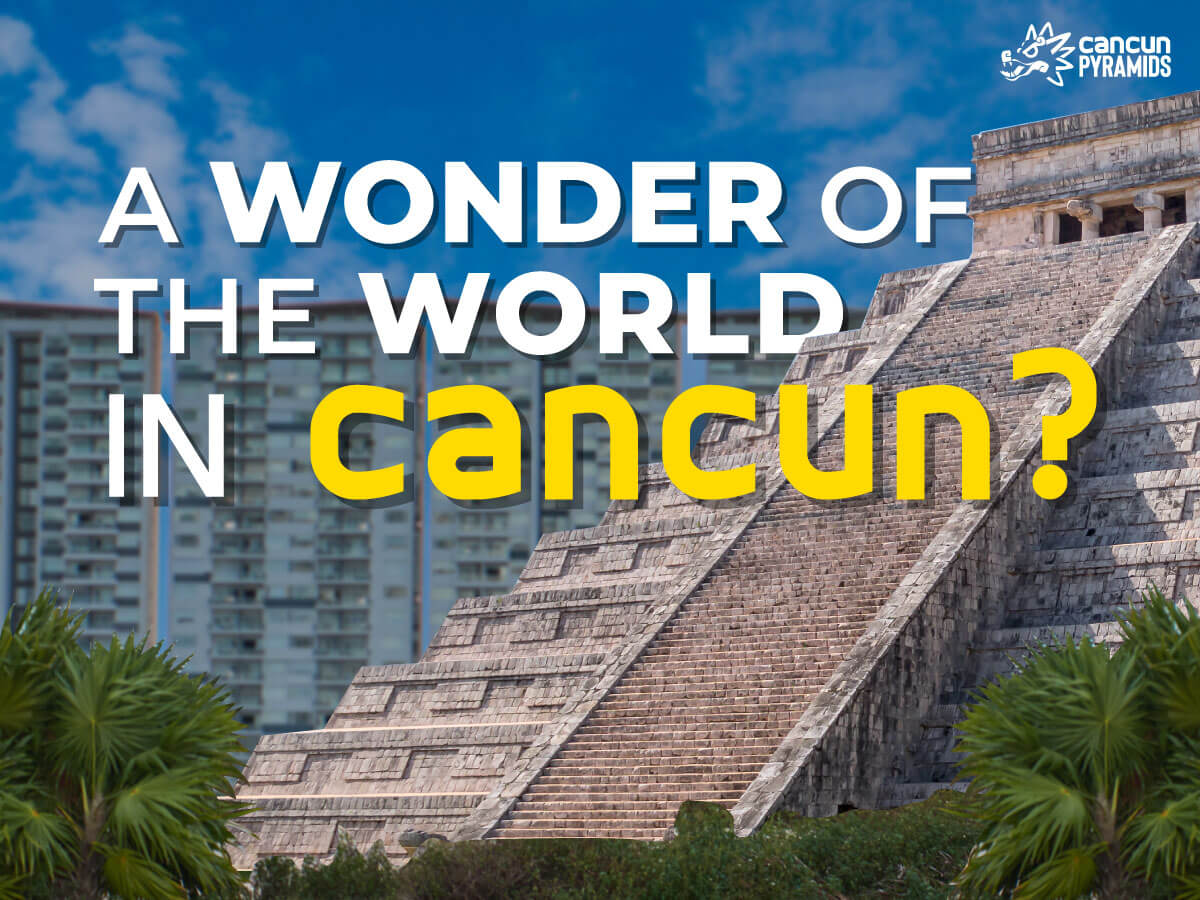in 2007, The New Open World Corporation organized a survey of the general public to determine the new 7 wonders of the world, a ranking of monuments based on more than 90 million votes approved by UNESCO. People’s choice included the ancient Mayan ruins complex Chichén Itzá.
Chichén Itzá, which translates from the Maya “al borde del pozo donde viven los Sabios del Agua”, was established by the Mayans between 325 and 550 AD, and changed by the Toltec’s arrival about the year 800, leading to the mixture of these two cultures. It wasn’t until the beginning of the 12th century that the city thus attained its pinnacle of splendor and rose to the top of the Yucatan Peninsula.
The Origin of Chichen Itzá – A New Wonder of the World
It is said that in the IX century A.D., the Itzáes settled at the wonder of the world “Chichén Itzá”. They were supposedly Putún or Chontal Maya that forged a vast domain with a unified culture with Chichén Itzá acting as its heart. The city was conquered by the Toltecs, a group known for their fierce warriors towards the end of the 10th century, and was abandoned for unknown causes in the year 1250 A.D.
The strength of this city was so strong that even centuries after it had fallen, it was still a place of prayer and pilgrimage. Francisco de Montejo, the founder of Mérida, had considered making it the country’s capital as early as 1540 A.D. The image of the serpent-god Kukulkán stands out among the fresh set of cultural features that this most recent invasion brought with it.
The majority of the Maya population was living in rural areas when the Spaniards first landed on the Yucatan Peninsula in the early 16th century, a time when the Mayan cities had already been abandoned. Therefore, there was little reason to believe that these rural communities had a rich past filled with notable artistic and scientific accomplishments. But Chichén Itzá nonetheless maintained its aura as a sacred site to such an extent that the Spaniard Francisco de Montejo, who conquered Yucatán, suggested that the province’s capital might be located there, even if the notion ultimately failed.
Pyramid of Kukulkan
The Mayans developed an Olmeca calendar on the Gulf of Mexico coast using their mathematical expertise and celestial observations, and constructed monuments to track and remember the motions of the moon, sun, and Venus, and their most recognized one is the Pyramid of Kukulkan.
On March 21 and September 22, the days of the beginning of the spring and autumn equinoxes, respectively, a solar projection is seen on the north staircase of the Pyramid of Kukulkan, which you can experience at our Chichén Itzá tour.
It consists of seven inverted triangles of light cast refracted by the building’s nine platforms at sunset, giving the staircase the appearance of a snake slowly descending to the head at the base of the pyramid and it only takes about 45 minutes from start to finish.
The lunar equinox is another phenomenon that can be seen here. During this time, the visual game of shadow triangles on the staircase of the El Castillo pyramid, which repeats the Kukulkan’s refracted light show, simulates the descent of the feathered serpent.
Want to visit or learn more about this wonder of the world? Visit our Instagram and check all about our Chichén Itzá tours.

